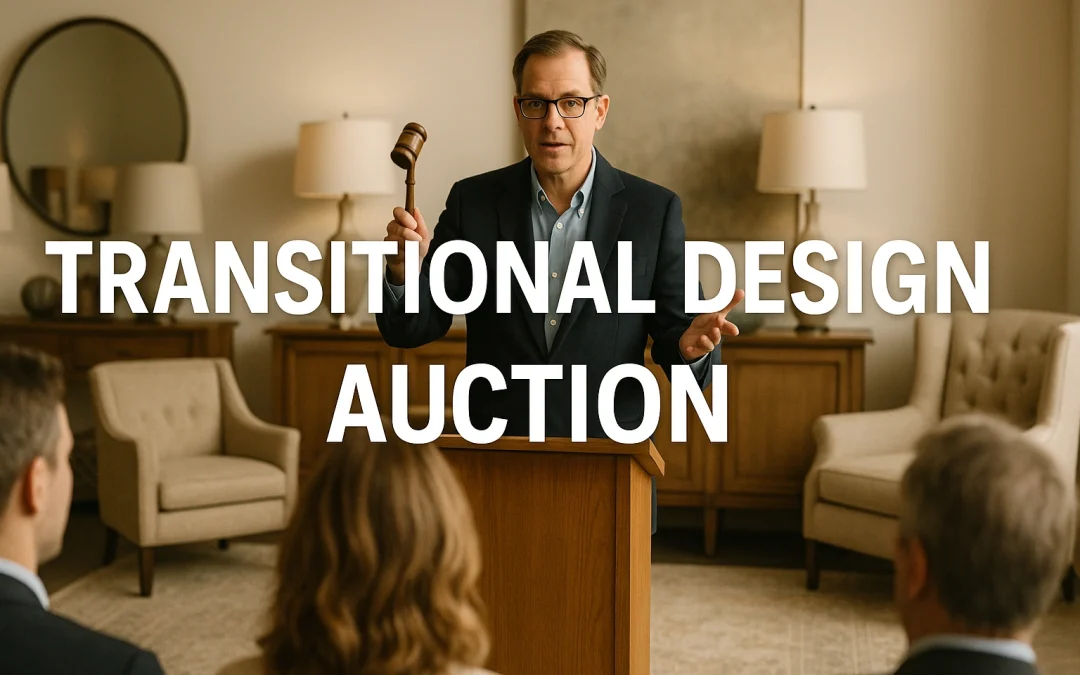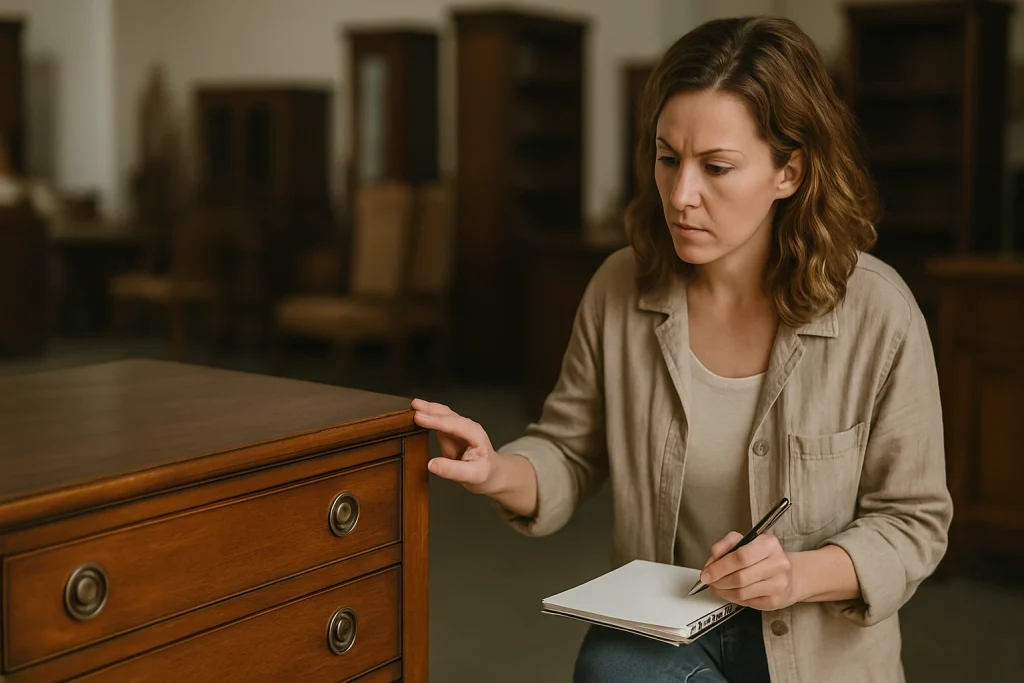1. Introduction: The Rising Importance of Transitional Design Auction
If you’re a buyer, collector, or interior design aficionado, the transitional design auction represents a fascinating crossroads — where aesthetic appeal meets marketplace strategy. In an era when clean, timeless interiors have mass appeal, the chance to own truly transitional pieces through auctions is a rare opportunity.
The growing interest in transitional design auction events is fueled by a desire for balance. Buyers no longer want interiors that lean too modern or too traditional. Instead, they look for versatile pieces that can adapt to a variety of settings — and auctions have become one of the best avenues to secure such timeless designs. Every transitional design auction provides bidders with a curated opportunity to find furniture and décor that offer both elegance and functionality.
Unlike mass-market furniture retailers, a transitional design auction delivers uniqueness. Each lot carries its own story, history, and character, which makes winning a piece feel more like acquiring a slice of design heritage. For investors, the allure lies in the fact that transitional design auction pieces tend to retain — and sometimes even increase — their value due to enduring popularity and limited availability.
In a marketplace where sustainability, craftsmanship, and timeless aesthetics are top priorities, transitional design auction platforms stand out as cultural experiences. They connect like-minded design lovers and savvy collectors, turning each bidding session into both a strategic challenge and a rewarding adventure. Whether your goal is to decorate a home, build a personal collection, or seek investment opportunities, immersing yourself in the world of transitional design auction ensures you’re always a step ahead in style and substance.
2. Understanding Transitional Design Style
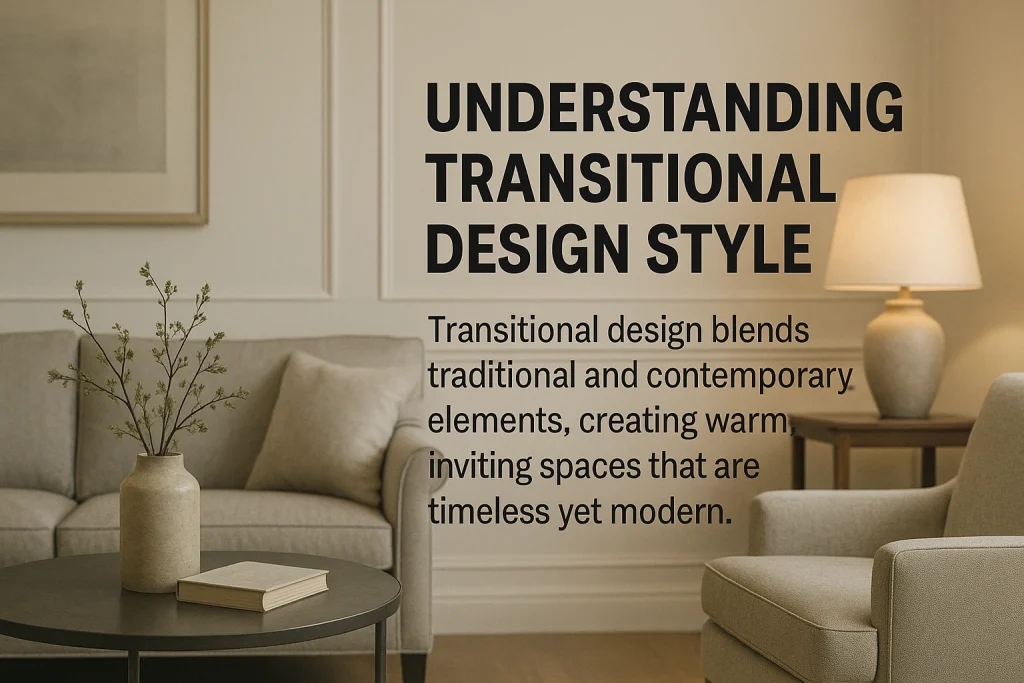
2.1 The Defining Features of Transitional Interiors
“Transitional design” is the blend — the graceful marriage of traditional and contemporary forms. It’s not bold modernism, nor purely classical sculpture; rather, the balance between formality and comfort
Key features include:
-
Neutral, tonal color palettes: creams, grays, taupes, soft whites — with accent pops rather than bold contrasts
-
Refined balance between curves and straight lines: furniture may combine symmetrical traditional shapes with minimal, clean edges
-
Texture over ornament: subtle texture (linen, tweed, natural wood grain) replaces heavy carvings
-
Simplified trim & moldings: you may see crown moldings or wainscoting, but stripped-down versions
-
Comfort-forward: generous seating, soft upholstery, functional but elegant
Because transitional design aims for timelessness, it remains relevant in resale and auction markets. Buyers appreciate its broad appeal across different interior styles.
2.2 How Transitional Furniture Is Described in Auctions
In auction catalogs, transitional pieces are often labeled as:
-
Transitional / contemporary blend
-
Modern-classic, modern-traditional
-
Neutral palette, minimal ornamentation
-
Mid-mod transitional
Photographs may highlight:
-
Clean lines with subtle decorative touches
-
Upholstery in neutral fabrics
-
Wood finishes with gentle patinas
When you see phrases like “neutral tone, mixed materials, simplified trim,” you should suspect transitional style.
2.3 Popular Transitional Designers & Makers
While not always labeled “transitional,” many high-demand furniture makers straddle this style:
-
Thomas Pheasant
-
Nina Petronzio
-
Hickory Chair — certain lines
-
Baker Furniture — transitional collections
-
Custom or semi-custom makers blending classical frames with modern finishes
When such names appear in auction lot descriptions, it’s a red flag worth investigating.
3. How Auctions Work (Especially for Design & Furniture)
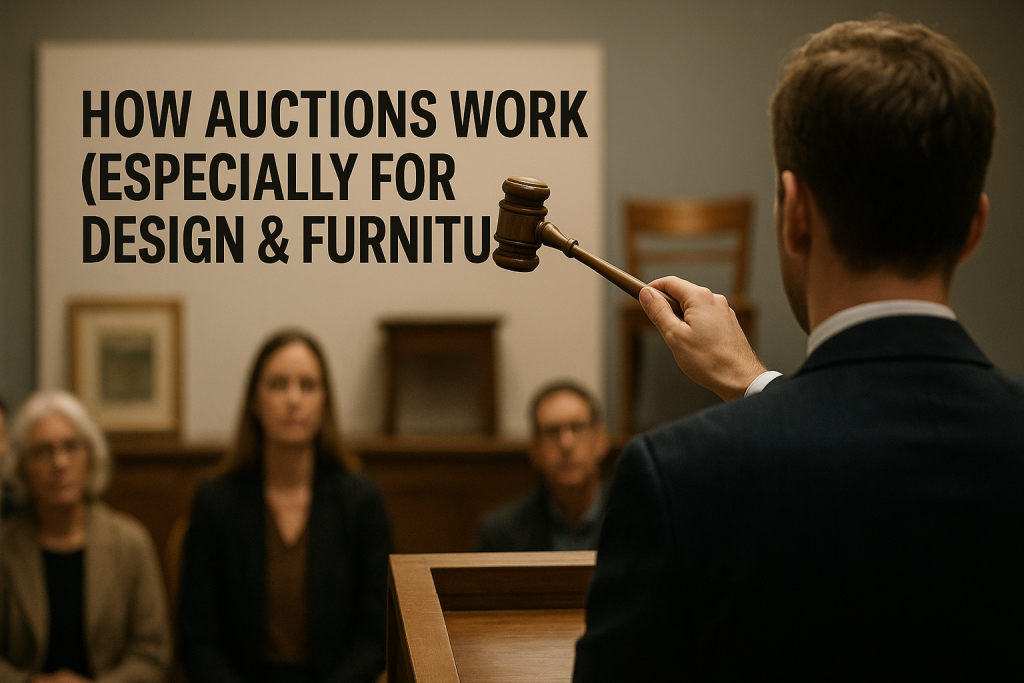
To master transitional design auction, you must grasp auction mechanics. A beautiful lot means little without knowing how it’s sold.
3.1 Types of Auctions
-
Online Auctions – Entirely virtual; you bid through a website, often with staggered closing rules. (Transitional Design runs one such platform.)
-
Estate / Consignment Auctions – Auction houses liquidate estates or consign items; often physical previews.
-
Reserve / Minimum Auctions – The seller enforces a minimum; if bids don’t reach it, the lot may be withdrawn.
-
Absolute / No-Reserve Auctions – The highest bid wins, no minimum threshold.
Each format requires a different bidding strategy.
3.2 Key Auction Mechanics
-
Proxy Bidding (Max Bid) — You enter the max you’re willing to pay; the system bids incrementally on your behalf.
-
Staggered Closing — Many online auctions avoid bid sniping by closing lots in staggered intervals (e.g. two lots every minute). Bids placed late may extend the time.
-
Buyer’s Premium — An extra percentage added to the hammer price (e.g. +15–25%) which the buyer must pay. Always factor this in.
-
Taxes, Handling, & Fees — Also include these when evaluating your bid
-
Lot Descriptions & Condition Reports — Read carefully. Descriptions might say “as-is,” “cond. graded,” or “untested.” e.g. Transitional Design’s Terms emphasize “AS IS, WHERE IS” and no implied warranties.
3.3 Auction Catalogs & Lot Descriptions — What to Watch For
A catalog is your earliest preview, so scrutinize:
-
Multiple angles of item images
-
Close-ups of wood grain, upholstery, joints
-
Dimensions (height, depth, width)
-
Provenance / history (who owned, when)
-
Condition notes (chips, wear, repairs)
If a lot has minimal description or only generic style terms (e.g. “19th-century style chest”), approach with caution.
4. Finding Transitional Design Pieces at Auction
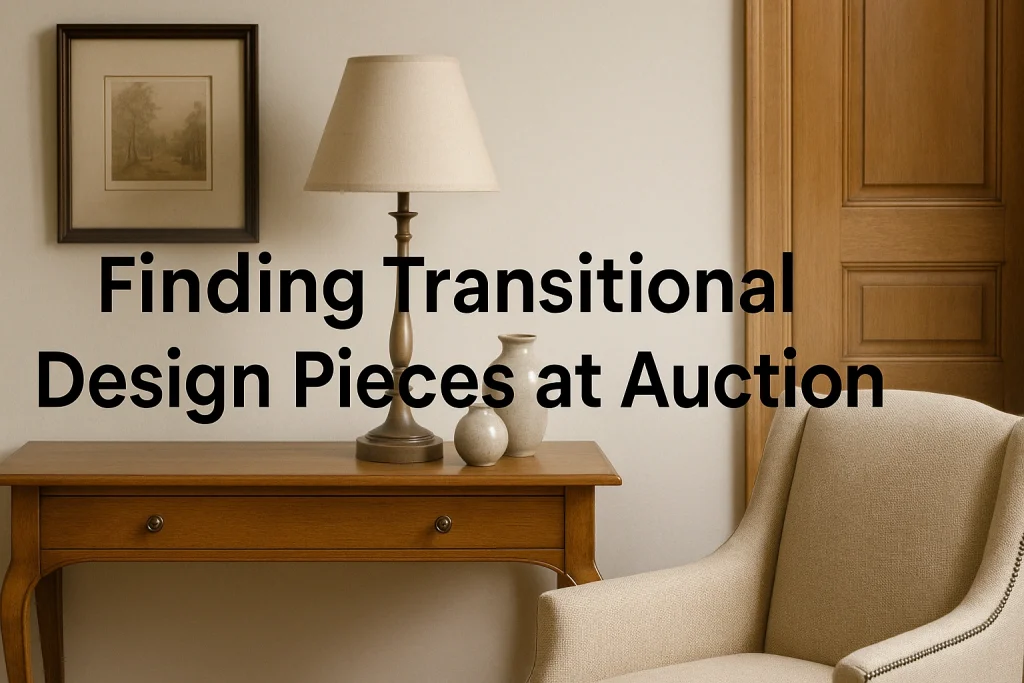
This is where the rubber meets the road: how you locate the right lots.
4.1 Searching & Filtering Auction Houses
-
Use “transitional style,” “modern-traditional,” or “neutral palette” in auction site filters
-
Browse Furniture / Home Décor / Lighting categories
-
Subscribe to auction house mailing lists / alerts
-
Utilize auction aggregators that allow combined filtering
-
Use date filters (past 3–6 months) to get realistic comparables
For example, Transitional Design Online Auctions lists furniture, lighting, décor, etc.
4.2 Recognizing Transitional Style in Catalog Photos
-
Look for symmetry with subtle curves
-
Avoid extremes (either too ornate or ultra-modern)
-
Favor neutral / low-contrast upholstery
-
Mixed materials (wood + metal, wood + glass)
-
Clean legs, squared-off edges, soft furnishings
Also compare with known designers to spot signature touches.
4.3 Provenance, Condition, & Authenticity
-
Provenance is a strong value multiplier — documented ownership, prior auction history
-
Condition matters more in transitional pieces (less forgiving than ornate heavy styles)
-
Always request condition reports and supplementary photos
-
Beware of “restored” or “repaired” notes — they may hide structural or finish issues
5. Valuing & Bidding Strategically on Transitional Pieces
This is where you convert research into real bidding strength.
5.1 How to Appraise Transitional Furniture
-
Use past auction sales of similar items (same maker, style, era)
-
Adjust for condition, patina, finish
-
Consider materials (solid wood, quality joinery)
-
Factor in desirability (color, upholstery, “trending” look)
-
Include cost of transport, restoration, and buyer’s premium
5.2 Using Comparables & Auction Results
-
Search prior auctions over last 1–3 years
-
Use archived catalogs or aggregator databases
-
Filter for transitional / modern-classic style & maker
-
Adjust for inflation / market change
If a comparable piece sold for $2,000 two years ago, and condition/market is similar, that gives you a bidding ceiling.
5.3 Bidding Tactics & Avoiding Overpaying
-
Always set a firm maximum before bidding
-
Use proxy bidding to avoid emotional overspend
-
Observe patterns: some lots see late bidding surges
-
Leave buffer for buyer’s premium and other costs
-
Don’t chase a lot — know when to walk away
6. Logistics: Consigning, Shipping, & Pickup

Even great lots mean nothing if you can’t transport them safely.
6.1 How to Consign Transitional Furniture to Auctions
-
Submit high-quality photos & measuring specs
-
Provide accurate provenance documentation
-
Pay consignment fees or upfront deposit if required
-
Choose the right auction (local vs national, niche vs broad)
Transitional Design’s consign process is outlined in its FAQ.
6.2 Shipping, Delivery, and Handling Considerations
-
Use insured freight/shipping for large pieces
-
Crate fragile or delicate furniture
-
Understand pickup windows & mover assistance
-
For online auctions, coordinate local pickup or third-party shipping
Transitional Design offers delivery at an hourly rate and handles loading assistance during defined pickup windows.
6.3 Inspection & Condition Reporting Checklist
Before taking delivery or pickup, inspect:
-
All surfaces: scratches, chips, veneer lifts
-
Joints: loose legs, wobble
-
Upholstery: stains, sag, tears
-
Functionality: drawers, doors, hardware
-
Photographic documentation for claims
7. Top Auction Houses & Platforms for Transitional Design

You want to be where transitional style is welcomed and visible.
7.1 Specialised Design & Furniture Auction Houses
Some auction houses focus on 20th-century design, mid-century, or high-end furniture. For instance, Los Angeles Modern Auctions specialises in Modern/Design auctions.
Others like Wright, Phillips, Sotheby’s, and Christie’s regularly host design auctions where transitional pieces may appear.
7.2 Online Platforms That List Transitional Lots
-
Transitional Design Online Auctions (OH, USA) — their core platform for furniture, home décor, art.
-
Other online auction houses/platforms with furniture categories
-
Aggregator sites (e.g. LiveAuctioneers, Invaluable), where you can filter by style
7.3 Case Study: Transitional Design Online Auctions (Ohio)
Transitional Design runs weekly online auctions offering diverse lots — furniture, decor, art, etc.
Important terms:
-
Their staggered time system
-
Proxy bidding
-
Pickup/delivery process
-
As-is sales condition
-
Consignment opportunities
Because they explicitly brand “Transitional Design,” the site has inherent authority in your niche.
8. Trends, Demand & Investment Potential

Is “transitional design auction” just a topic or a growth opportunity?
8.1 Current Market Trends for Transitional Design
-
Transitional interiors are increasingly popular in new builds and remodels for their timeless appeal
-
Buyers seeking decorative but restrained styles — less maximalism, more elegant minimalism
-
Transitional pieces tend to age better in resale than hyper-trendy designs
8.2 What Drives Demand in Design Auctions
-
Rarity & provenance
-
Quality of materials & construction
-
Condition & patina
-
Market hype/designer name
-
Fresh vs overexposed style (less oversupply)
Because transitional design is middle-ground, it appeals to more buyers (not just extreme modern or ultra-classical collectors).
8.3 Forecast: Is Transitional Design a Good Investment?
While markets fluctuate, transitional style’s flexibility gives it resilience. As long as you:
-
Buy quality (solid materials, good maker)
-
Maintain condition
-
Choose lots with strong provenance
…then transitional design auction purchases can increase or at least retain value better than more niche or fad styles.
9. Common Pitfalls & How to Avoid Them

Knowledge is only half the battle — mistakes can cost dearly. Even the most experienced collectors can fall victim to costly errors in a transitional design auction if they aren’t cautious.
9.1 Misleading Catalogue Descriptions
-
Minimal descriptions can hide flaws
-
Terms like “transitional vibe” or “style of” may indicate imitation
-
Always ask for additional photos and condition notes
9.2 Hidden Costs: Premiums, Commissions & Shipping
-
Don’t forget the buyer’s premium
-
Factor in taxes, handling, and delivery
-
Some auction houses have extended storage or late pickup fees
9.3 Restoration Risks & Condition Surprises
-
Poorly done restorations can hurt value
-
Hidden structural damage (woodworm, internal cracks)
-
Over-refinishing can erase patina (which collectors like)
Always have inspections, a warranty if possible, or a documented condition report.
10. Conclusion & Next Steps
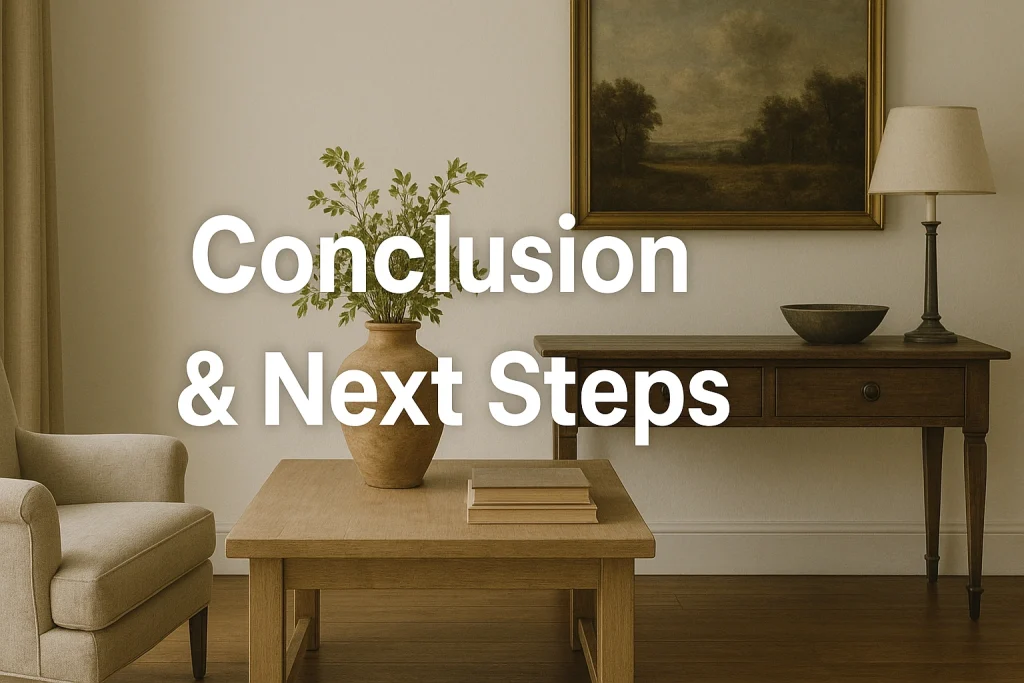
You now have a clear roadmap to succeed in transitional design auction: understand the style, identify the right lots, bid with confidence, and manage logistics smartly. What was once an intimidating niche becomes far more approachable when broken into actionable steps.
Action Steps for Success:
-
Explore live auctions — Begin with reputable platforms such as Transitional Design’s official site and subscribe to their alerts so you never miss an opportunity.
-
Review recent lots — Build a database of past transitional pieces, tracking hammer prices, conditions, and provenance for comparison.
-
Test with low-stakes bidding — Gain experience in smaller sales before moving into competitive auctions with higher-value transitional furniture.
-
Arrange inspection and shipping contacts — Establish trusted movers, restorers, and appraisers early to save time and avoid last-minute hurdles.
-
Develop topical authority — Expand your presence by writing reviews of auction results, creating style guides, or curating catalogues that focus on transitional design.
The future of the transitional design auction is promising. As sustainable design practices grow in importance, buyers are increasingly drawn to auctions for high-quality, pre-owned furniture that is both eco-friendly and timeless. Each event is more than a marketplace; it’s a bridge between the craftsmanship of the past and the evolving needs of modern interiors.
By immersing yourself in this space, you don’t just collect furniture—you collect stories, value, and opportunities. Over time, consistent involvement in transitional design auction platforms can transform you from a casual bidder into a recognised authority in the design and auction community. Whether your goal is to enhance your home, grow your investment portfolio, or simply enjoy the thrill of competitive bidding, the transitional design market offers an exciting path forward.

